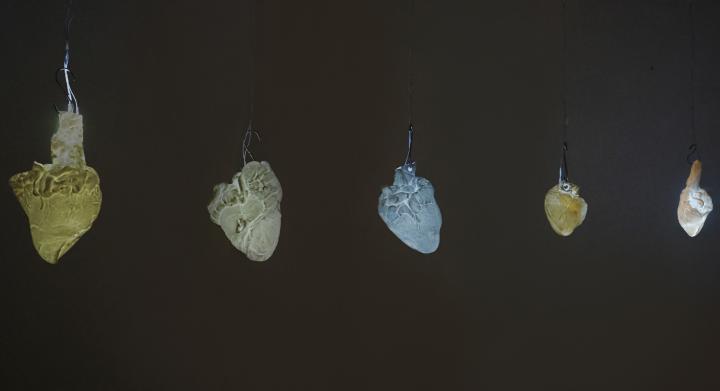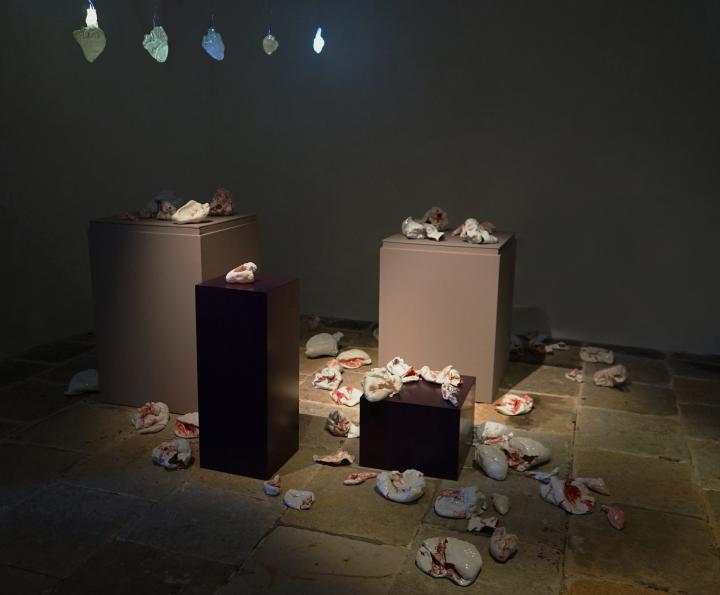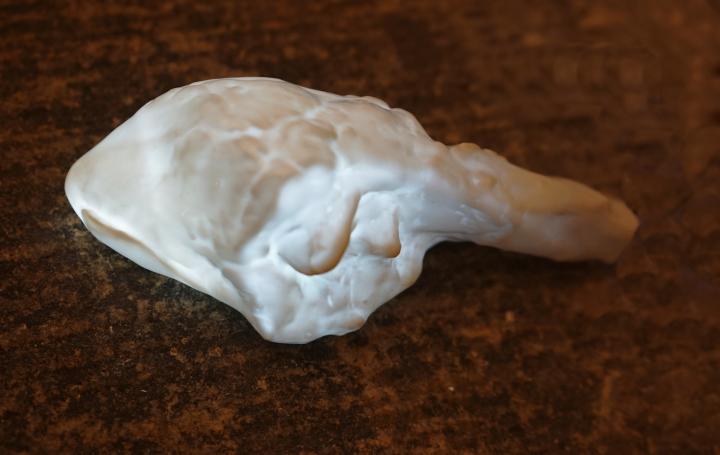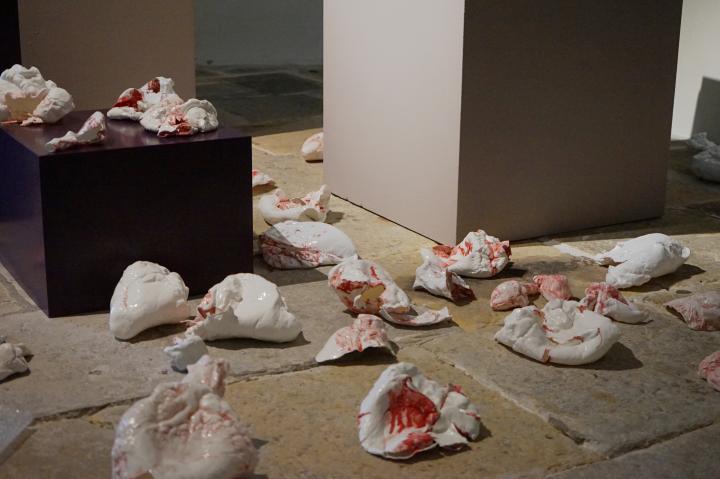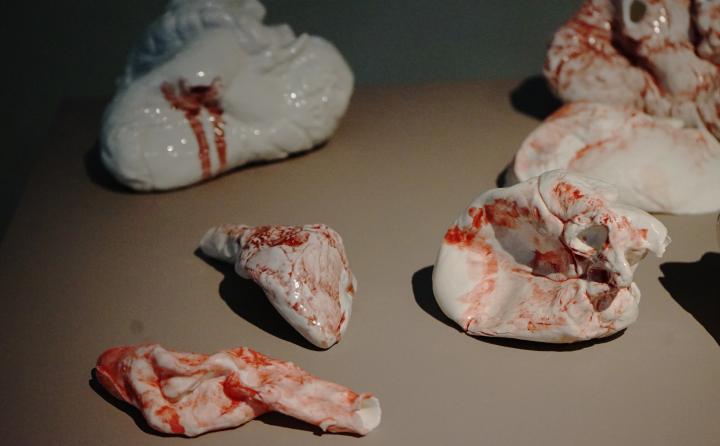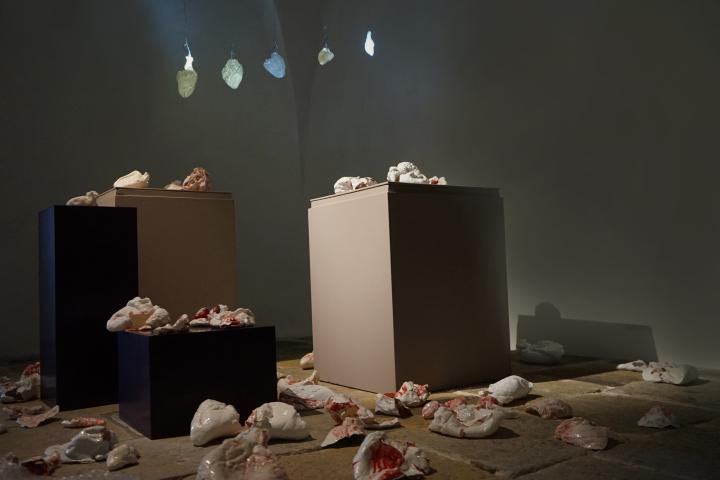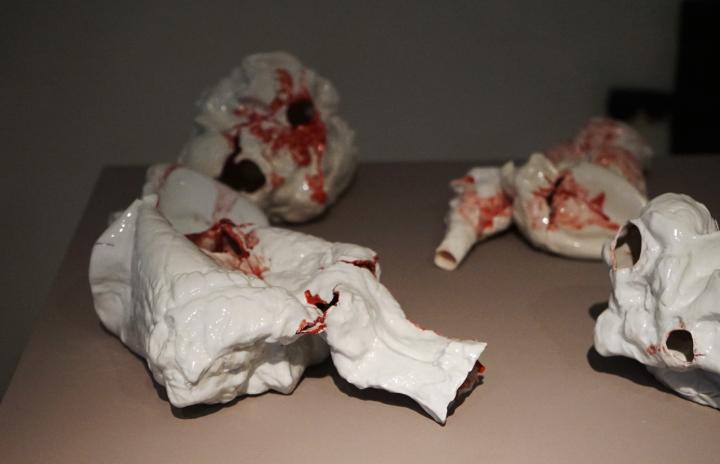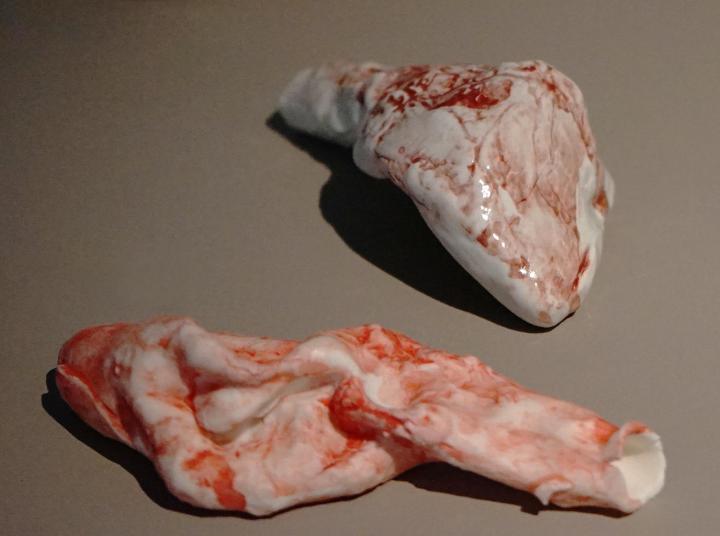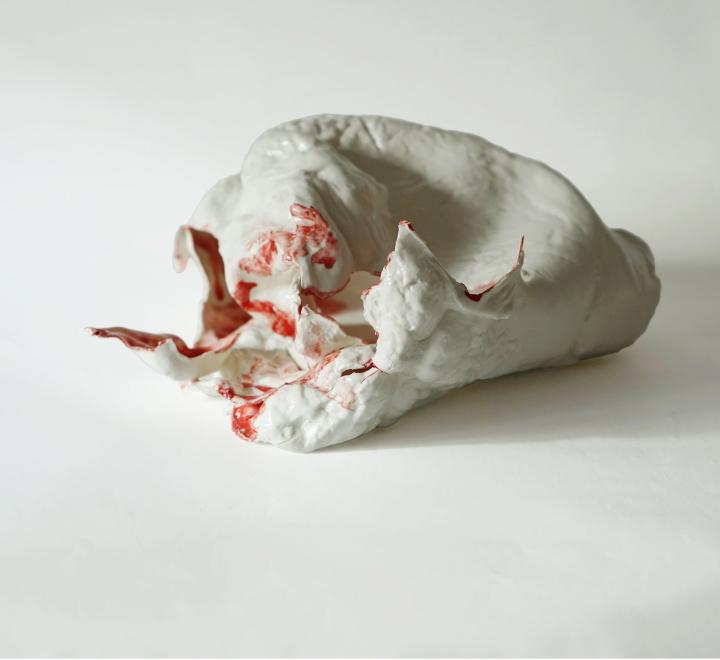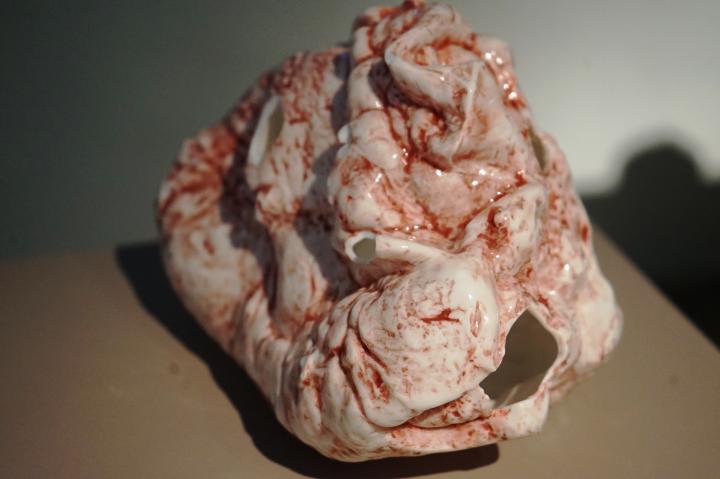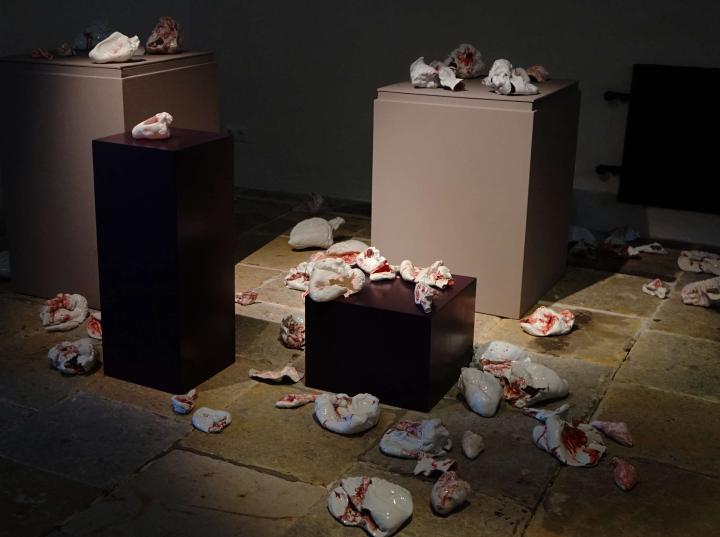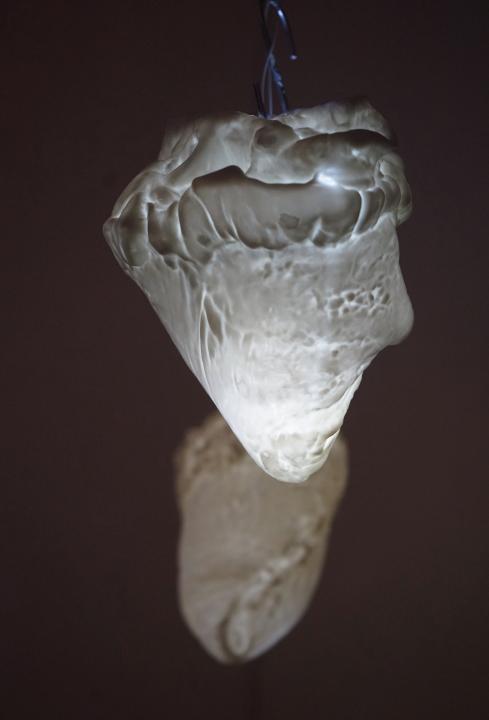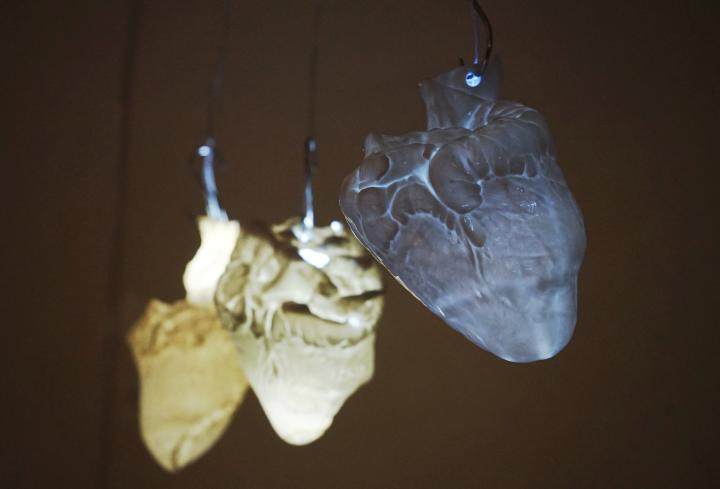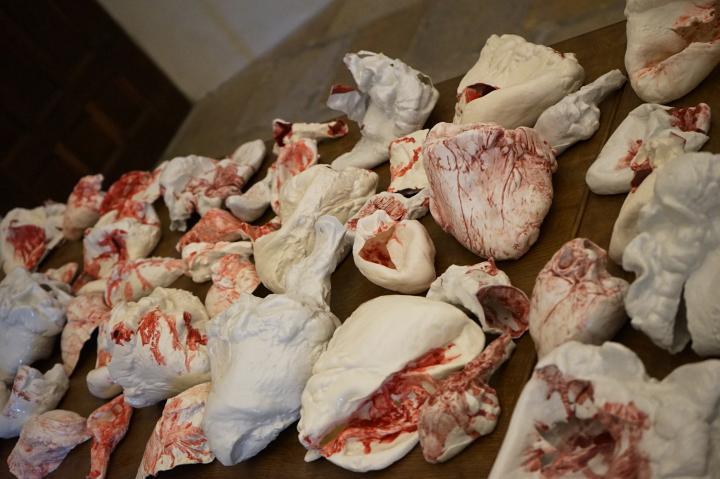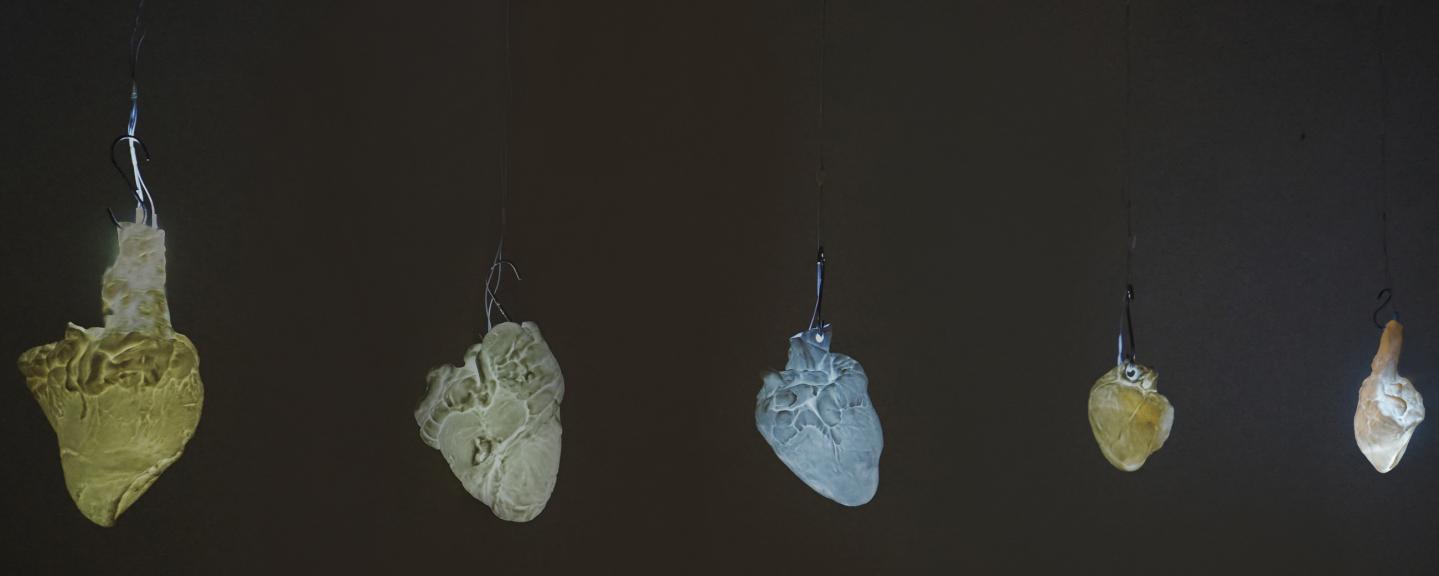
BROKEN HEARTS, SHATTERED HEARTHS
Installation with 65 Porcelain Objects ; Text by: Sergio Matalucci
Ukrainians have been faced with the cruelty of an intra-family war, where multiple identities have been destroyed in a blink of fake news, where affection has been shattered like pieces of glass or porcelain. Thousands of people got killed by bullets, rockets, bombs, and splinters. Several other people, mostly the elders, died of stress. They saw the inhumanity of violence and domination, they had to open their eyes on how their hearths were fragile. They surrendered to the pain inflicted by a war many people did not want, not only in Ukraine, but also in Russia.
If some Ukrainians were lucky enough to receive support from their relatives in Russia, most of them were not. When some Russian relatives turned down requests for material and psychological help, many witnesses of war were victims once more. Some were accused of nazism and betrayal; their fears were often downplayed and treated as paranoia. By their own families over the border. These Ukrainians felt walked over by the power of Russian propaganda; they felt left alone by their beloved ones living in the neighbouring country, the brothers that bombarded their peace and invaded their plans.
Many Ukrainian families did not simply experience the war but also had to take distance from parts of their past. Now, traumatized, survivors have to find a new identity. Like when a glass breaks, the repercussions will also be paid by the ones who have to collect the splinters and the others who will be scared of walking into the broken glass and hurting themselves. Splinters will remain more than broken bodies.
Most of the survivors saw fellow Ukrainians treated and killed like animals to slaughter. Like beef, like veal, like pork, like a lamb. Maria uses the hearts of these animals to represent the traditional Ukrainian hearths, where older people, adults, and children live together. Each animal’s heart represents a family figure: the babusya, the didus, the mother, the father, and the children. Animals exposed, families represented.
Maria grew up in Kiev but then moved to Germany as a teenager. She has a complex identity, which changed with the war too. Her heart is unconditionally beating for Ukraine; her hearth will most likely remain in Berlin till the end. She sees firsthand how families’ ties have been redrawn, reshaped, remodeled. Her mother hosts refugees, relatives. Maria can observe, within her family, the beauty and the pain of hospitality. She is a witness herself.
This installation is about the war in Ukraine and, more specifically, about the impact on Ukrainian families. Inside and outside Ukraine. The last standing hearts keep the light of the family, becoming lamps and orientation tools, while many others lost their function. No more light. They lie on floor, disfigured by external influence. They got walked over; they collapsed; they went off into splinters. Just fragments, or useless hearts, or small hearts full of blood. Children dismissed, taken to Russia, or left with a broken family.
The blood of war and the heart-wrenching propaganda will keep their stain longer than the war itself: disillusioned by the strongest of ties, they will have to find new stability, a new family structure, a new source of information, a new reality. They will have to change their life. The questions now are two. How can shattered hearts go on and trust, love, and pulse for some new life? How can they keep the sparkle of life in this dim and doomed reality? The hearts are shuttered and shattered. They were hurt. They are now hurting.
